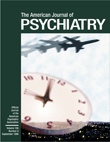This textbook is a concise, although not comprehensive, textbook of child psychiatry. Its advantages over other child psychiatry textbooks are several. One, it is a portable paperback—weighing probably one-fourth of what other textbooks weigh. Two, the information provided is practical. Students, clinicians in training, and clinicians who want some knowledge of child psychiatry can obtain a quick overview of a particular disorder or issue pertinent to children (e.g., attention deficit hyperactivity disorder [ADHD] or divorce). Three, the information is presented in a user-friendly fashion. Most of the chapters have useful tables and diagrams as well as interesting case presentations.
Each chapter is written by different contributors. Several of these contributors are world-renowned experts—for example, Barbara J. Coffey co-authored the chapter on tics and Tourette disorder, and Bryan H. King co-authored the chapter on mental retardation. In general, each chapter is well written and the information presented is very accessible, either in the form of case presentations, tables, or organized around clinical questions/myths.
The editors have done an excellent job in organizing this text. The first section, The Fundamentals of Child and Adolescent Psychiatric Practice, consists of seven chapters on assessment, including psychiatric, neurobiological, psychological, and educational assessment. All of these chapters are well written and could be useful in an introduction to child psychiatry curriculum. The second section, Common Child and Adolescent Psychiatric Disorders, consists of chapters on only the most commonly encountered child and adolescent psychiatric disorders—ADHD leads the way, followed by disruptive behavior disorders, mood disorders, anxiety disorders, substance abuse, and childhood trauma. This section could be a good resource for pediatricians or other clinicians who treat children and who need some basic understanding of the common child and adolescent psychiatric disorders. Other child and adolescent psychiatric disorders are then presented in the third section, Developmental Disorders. The fourth section, Special Problems in Child and Adolescent Psychiatry, has chapters on important issues such as foster care, divorce, sleep problems, and the challenges of modern practice.
I recommend this text to interns and residents in psychiatry and child psychiatry as well as to pediatricians and general psychiatrists. It is not comprehensive enough for board certification preparation. However, any clinician who works with children and adolescents could find this textbook useful as a quick reference.

